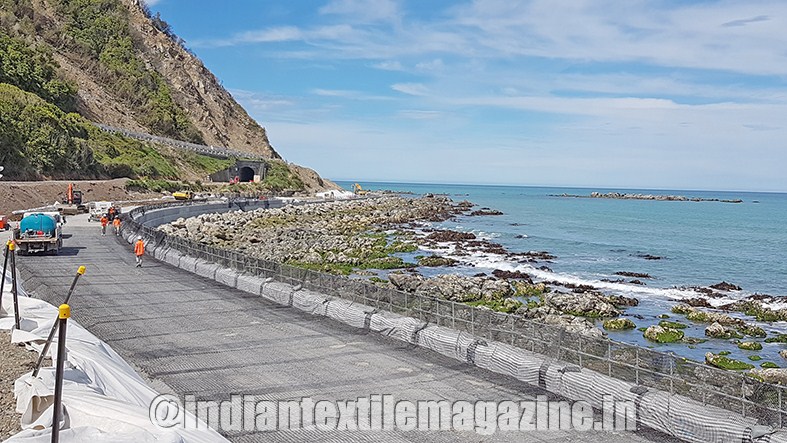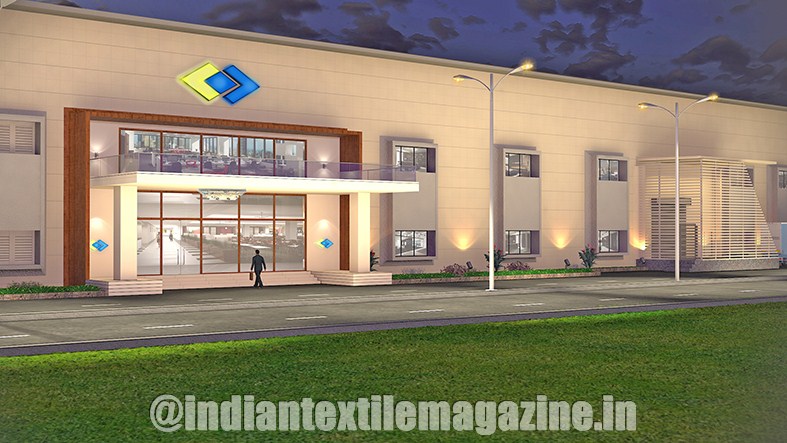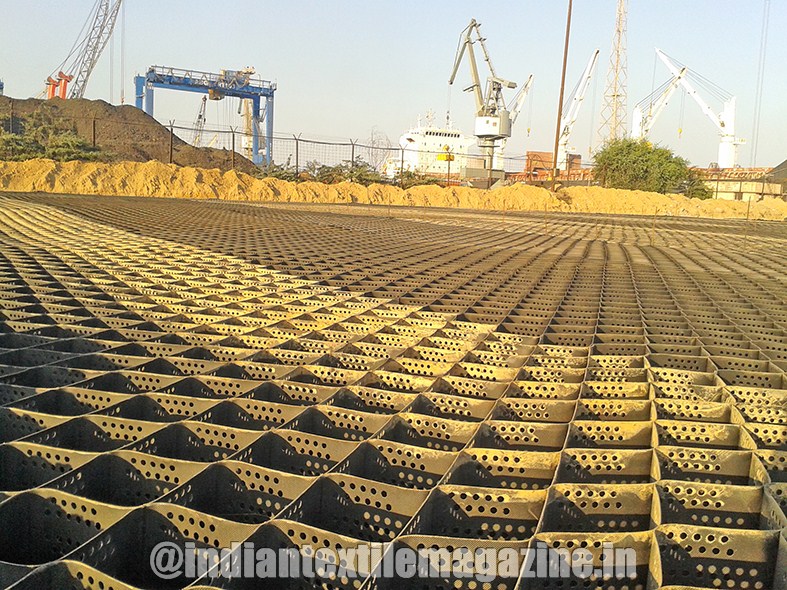Strata Geosystems is considered a leading player in the geosynthetic segment for soil reinforcement solutions in India and across key global markets. Established in 2004, in partnership with Strata Systems Inc., USA, a two-decade veteran in geosynthetics and a subsidiary of the 130-year-old textile firm, Glen Raven, the company provides end-to-end solutions for soil reinforcement challenges, including supply, design and construction with its globally well-known technologies – StrataGrid™ (geogrid) and StrataWeb® (geocells).

Speaking exclusively to The Textile Magazine, Mr. Gautam Dalmia, Chief Development Officer, said that, besides India, Strata has offices located in the UK, the US and Brazil.
Strata’s solutions include high quality knitted PET geogrids (StrataGrid), uniaxial, of strengths varying from 40kN per metre to 400kN per metre in the machine direction. The applications include reinforced soil structures, including walls and slopes, commonly used for grade separators and bridge approaches, reinforcement for components of a flexible pavement, and ties to support geocells along a slope.
The company also offers quality geocells for several applications, including load bearing and slope erosion protection. The product under the brand name StrataWeb is manufactured in various designs according to application. Geocells are versatile and have numerous engineering applications, including, but certainly not limited to, reinforcement for components of a flexible payment, including its subgrade, improvement of the subgrade for rigid pavements, load bearing such as in container yards, parking lots, factory flooring, etc., constructing gravity walls, including check dams, fascia for reinforced soil walls and slopes and structures of military significance.

The other associate products include precast concrete modular fascia blocks for reinforced soil structures, precast reinforced concrete fascia panels and precast concrete crash barriers.
Strata has also included concrete structures in its portfolio, including underpasses and box culverts, and complex structures such as precast segmented concrete arch bridges. Besides, Strata Geosystems offers comprehensive design engineering solutions around its products. Comprehensive design engineering solutions may require use of other products to complement the Strata products such as nonwoven geotextiles.
Offering an insight into the manufacturing process behind the company’s two primary technologies, geogrids and geocells, Mr. Dalmia said: “StrataGrid is manufactured from a high-grade PET (polyester) yarn with special, high tenacity and low creep which are optimal engineering characteristics essential for reinforced soil technology. It is then treated with proprietary polymer modified bitumen coating for ultraviolet and chemical protection and without thermal degradation during the coating process.”

He added: “StrataWeb manufacturing involves extruding the base polymer using laser-controlled processes to ensure accuracy throughout the batch. After extrusion the sheets are perforated through a high-power punching machine and then finally the joints are welded using advanced ultrasonic welding machines which provide the highest weld strength possible.”
Some of the major projects executed by Strata include:
- a) Expansion of National Highway 8 (the new NH48) at the Ahmedabad-Vadodara stretch from four to six lanes. In this project, the company supplied, designed and constructed the reinforced soil walls using StrataGrid as soil reinforcement and StrataBlock as fascia. In total, 46 structures over 294,900 sq. fascia area were constructed.
- b) Rehabilitation of National Highway 44 near Assam-Tripura border. The roads were destroyed due to heavy rains and a part of Tripura was isolated from rest of the country. The conventional repairs were unsuccessful. Strata recommended StrataWeb within the pavement section and the road (~500 meters of a trial) was constructed within 15 days of receiving the materials. This project monitored by the Prime Minister’s Office has been acknowledged by Assam PW (Buildings and NH) Department.
- c) India’s first vertical landfill. The company constructed the retaining structures of reinforced soil using StrataGrid, StrataBlock and StrataSlope. This doubled the total dumping capacity. The total fascia area of reinforced soil containment system is 6,600 sqm.
- d) Improvement of load-bearing capacity of the subgrade of access roads to container yards at the JNPT port in India. Strata constructed the access road from the main artery road up to the container terminal, which is a distance of approximately 1.8 km.
- e) StrataWeb gravity wall: The company constructed an aesthetically pleasing retaining wall for a residential property.
Referring to the successful projects where Strata has offered specific, tailor-made solutions, Mr. Dalmia said: “The company has designed, supplied and installed StrataWeb geocells on many highways, residential properties and golf course for slope erosion protection. Some of our famous projects include National Highway 215, Odisha, National Highway 91, Aligarh – Ghaziabad, Uttar Pradesh, and DLF Golf course, Gurgaon.”
The company is in the process of setting up a new plant in Gujarat. Going into its details, Mr. Dalmia said: “Strata is almost completing construction of its new state-of-the-art manufacturing facility which is truly world-class and houses automated machinery and processes. The plant will provide up to 30 million sqm of geogrid, catering to the Indian as well as global markets. The state-of-the-art facility will enable us to grow our presence globally.”
Strata is already exporting its products to South Asia, the Middle East, Africa, Europe, Australia, New Zealand, etc.
Mr. Dalmia felt that there is huge potential in the future for geosynthetic solutions. “Recently, in September 2018, the Ministry of Road Transport & Highways and Shipping (MoRTH) has mandated that it is essential to incorporate geosynthetics in all infrastructure projects under the Ministry. This has opened tremendous scope for the use of geosynthetics for infrastructure projects, particularly road projects. Besides, the Indian Roads Congress as well as the Bureau of Indian Standards are coming up with several new standards, codes of practice and guidelines for the use of geosynthetics,” he added.
